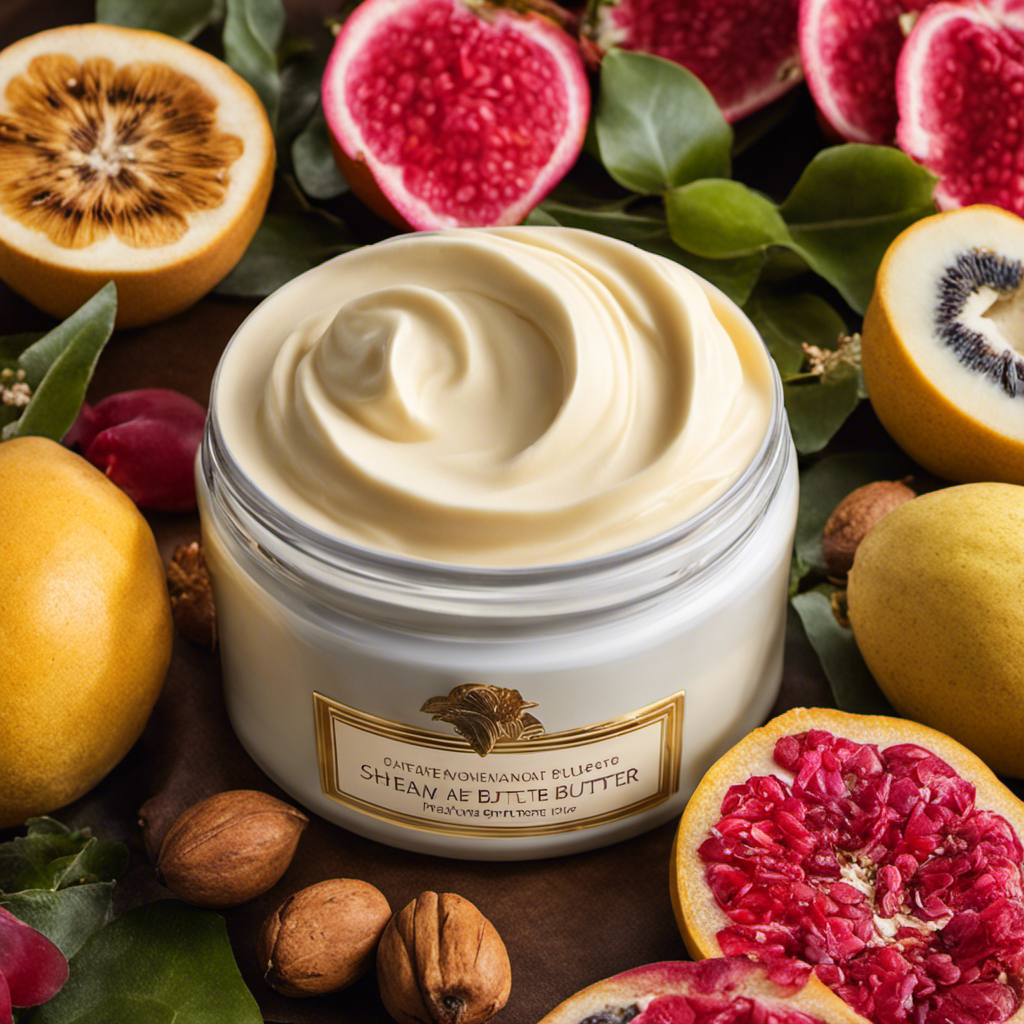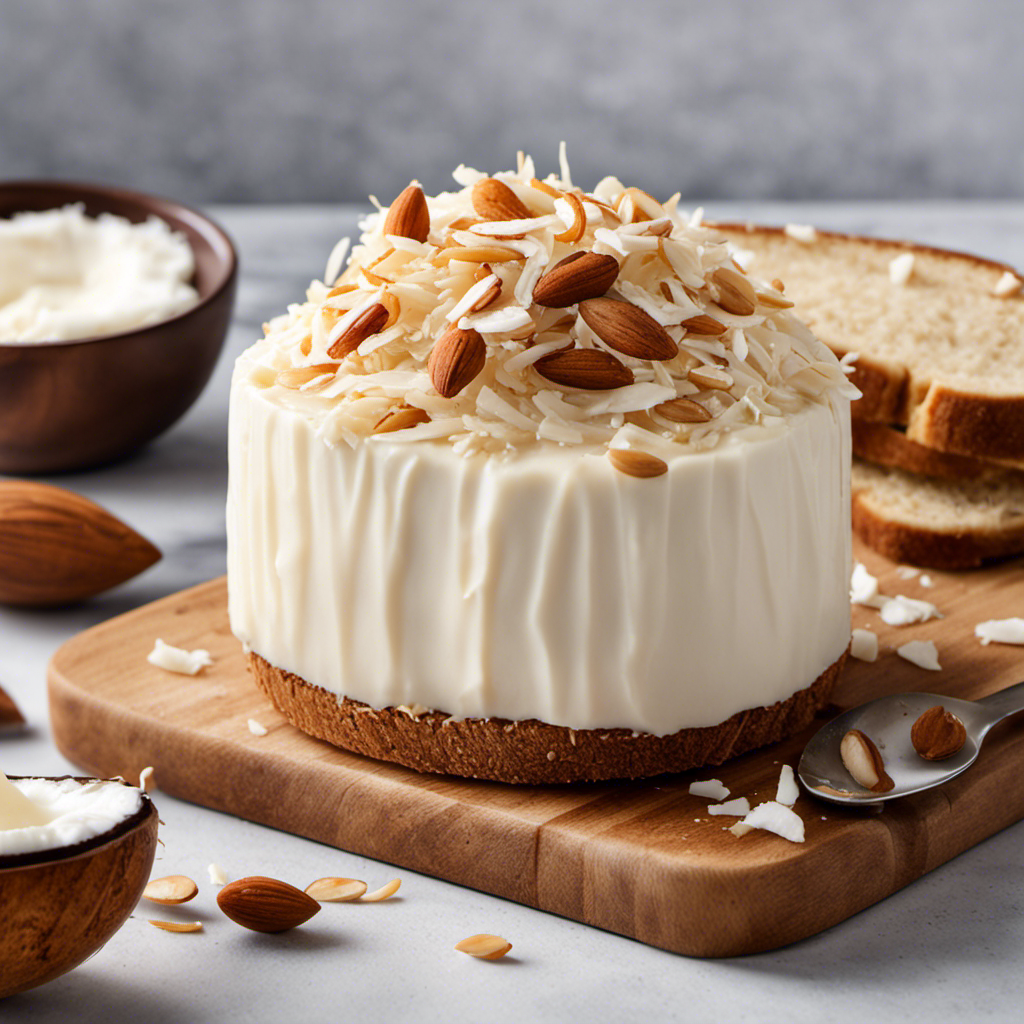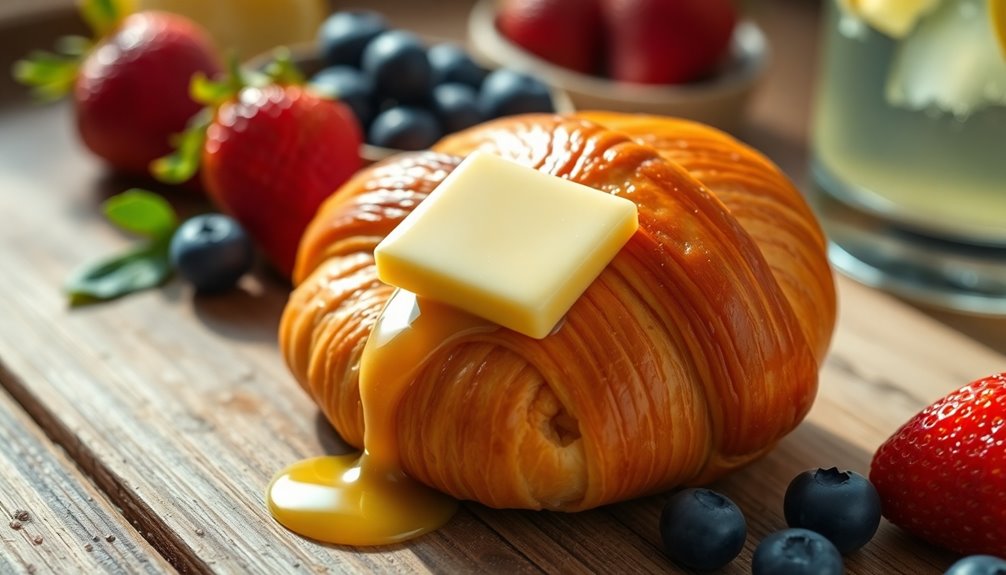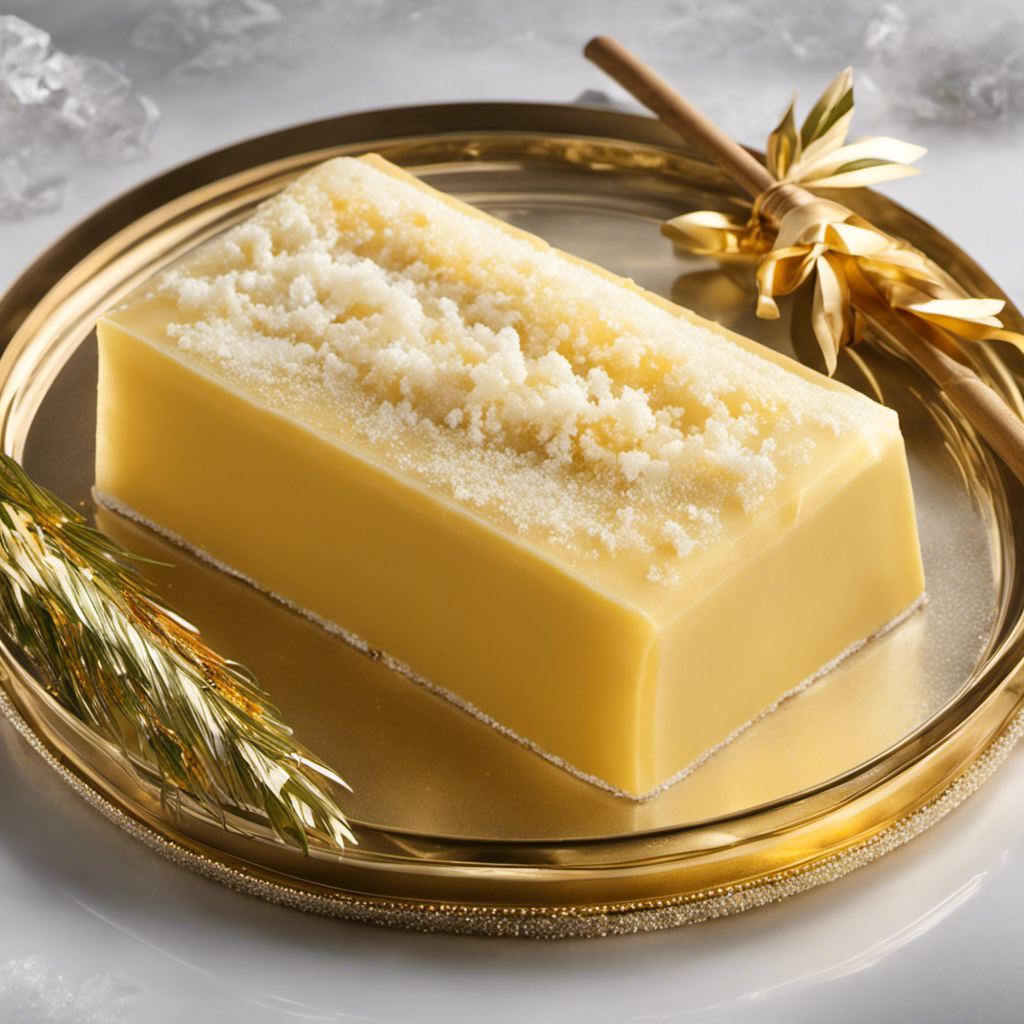Eating vintage means prioritizing whole foods and healthy fats like butter, moving away from the empty promises of low-fat diets that often lead to more hunger and unhealthy snacking. Butter isn't just delicious; it's packed with essential fat-soluble vitamins and healthy fatty acids that support brain health and nutrient absorption. Vintage meals emphasize nourishment and satisfaction, providing a deeper connection to what you eat. By choosing vintage, you're not only improving your health but also enjoying your food more. Stick around to discover how embracing vintage eating can transform your meals and well-being.
Key Takeaways
- Vintage eating promotes whole, unprocessed foods, enhancing overall nutrition and health.
- Consuming butter provides essential fat-soluble vitamins vital for metabolic function and nutrient absorption.
- Traditional cooking methods, like using butter, retain nutrients and improve the flavor profile of dishes.
- Embracing seasonal ingredients and vintage recipes fosters a deeper connection to food sources and culinary heritage.
- Healthy fats, including butter, contribute to satiety, reducing unnecessary snacking and supporting weight management.
The Rise of Low-Fat Diets
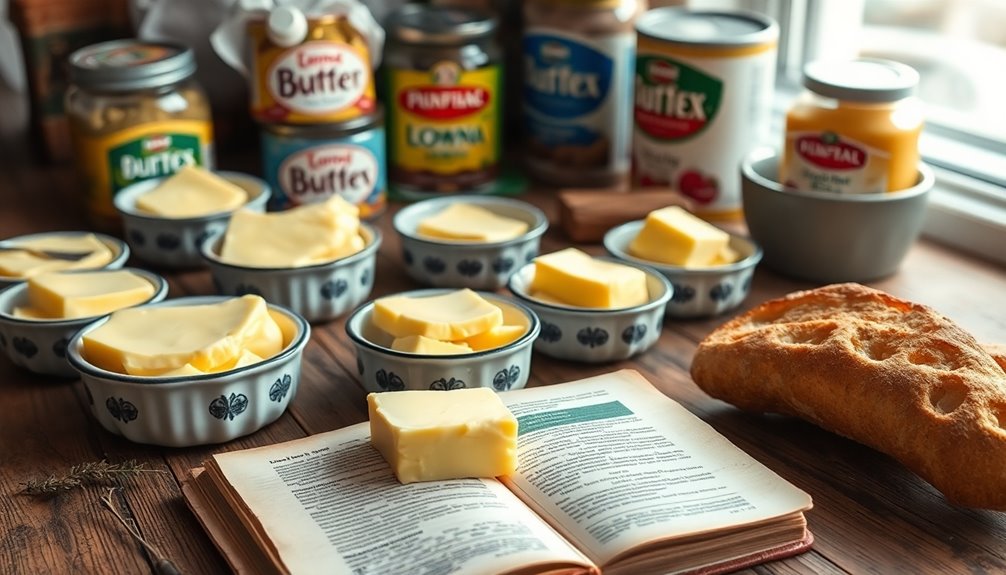
Many people have embraced low-fat diets over the past few decades, believing they're the key to better health. You might've heard that cutting fat from your meals can help shed pounds and lower disease risk.
However, this approach has led to unintended consequences. As low-fat options flooded the market, many replaced healthy fats with refined carbohydrates, inadvertently increasing hunger and promoting unhealthy eating habits. Additionally, hula hooping is a fun way to incorporate physical activity, which can help manage weight alongside dietary changes. Furthermore, incorporating healthy fats into your diet can enhance energy levels and reduce fatigue. Butter contains vitamins that are essential for various bodily functions and can contribute to a feeling of satiety. Research shows that including antioxidants from coffee may also boost overall health outcomes.
You may find that relying on low-fat products doesn't satisfy your cravings, leading to constant snacking.
With nearly 70% of adults now overweight or obese, it's crucial to reconsider this dietary trend. Instead of fearing fat, it might be time to embrace it for a more balanced and satisfying diet that truly supports your health goals. Moderation in butter consumption can allow you to enjoy the benefits of healthy fats while maintaining a balanced diet.
Benefits of Vintage Breakfasts

What if rethinking your breakfast could lead to better health? Vintage breakfasts often prioritize whole, nourishing foods that can stabilize your energy levels throughout the day.
Instead of sugary cereals or processed options, consider hearty fare like eggs, whole-grain toast, and fresh fruit. These foods not only taste great but also provide essential nutrients that modern diets often lack. Additionally, incorporating foods like baked kale can enhance your nutrient intake, offering a wealth of vitamins and minerals. Bread pudding is another vintage option that can transform leftover bread into a satisfying dish, making it a great way to reduce waste while enjoying a delicious meal. Furthermore, including folate-rich foods in your breakfast can support overall health, particularly in reducing the risk of deficiencies. Moreover, anti-inflammatory foods like turmeric can be a great addition to your meals, helping to reduce potential inflammation in the body. Adding customization options to your meal preparation can enhance your cooking experience, allowing you to tailor dishes to your taste and dietary needs.
You'll likely feel more satisfied and less tempted to snack before lunch. Embracing vintage meals can also introduce you to traditional cooking methods, fostering a deeper connection with your food.
Role of Healthy Fats

When it comes to nutrition, the role of healthy fats can't be overlooked. Incorporating these fats into your diet can lead to numerous benefits. They not only provide essential nutrients but also enhance your meals, making them more satisfying.
Consider these points about healthy fats:
- Boosts satiety: Fats help you feel full longer, reducing unnecessary snacking.
- Supports brain health: Omega-3 fatty acids improve cognitive function and mood. Additionally, healthy fats are known to support overall brain health and cognitive performance.
- Aids nutrient absorption: Healthy fats help your body absorb fat-soluble vitamins (A, D, E, K). In addition, including natural fats like butter in moderation can contribute to overall dietary satisfaction. Butter's composition includes essential nutrients that enhance health when consumed appropriately, and consuming sustainable energy sources can further promote a balanced diet.
- Regulates hormones: Fats play a significant role in hormone production and balance.
- Promotes heart health: Unsaturated fats can improve cholesterol levels and reduce heart disease risk.
Additionally, consuming herbal teas that contain antioxidants can complement your diet rich in healthy fats, supporting overall wellness.
Embracing healthy fats can transform your approach to eating and overall wellness.
Addressing Modern Health Issues

Addressing modern health issues requires a critical look at the dietary habits shaped by decades of low-fat guidelines.
You may not realize how these recommendations have led to an increase in refined carbohydrates, contributing to obesity and chronic diseases like diabetes and high blood pressure.
Instead of feeling satisfied after meals, you might find yourself hungry and reaching for unhealthy snacks. Incorporating fiber-rich foods into your diet can also help you feel fuller for longer. This is similar to how positive energy can influence opportunities in other areas of life, including health. Foods high in soluble fiber can be especially beneficial for reducing hunger.
It's crucial to understand that a diet low in healthy fats can exacerbate these problems.
Reassessing your approach to eating by incorporating more whole foods and healthy fats can help combat these modern health crises.
By shifting your focus away from outdated dietary recommendations, you can pave the way for better health and well-being.
Incorporating healthy fats into your meals, such as avocados and olive oil, can significantly enhance satiety and improve overall nutrient absorption.
It's time for a change!
Embracing Vintage Eating Styles

Vintage eating styles offer a rejuvenating alternative to modern dietary trends that often prioritize low-fat options over nourishment.
By embracing these styles, you can reconnect with wholesome foods that promote better health and satisfaction.
Here's how you can get started:
- Incorporate healthy fats: Use butter, olive oil, and avocado for flavor and satiety. Unsalted butter is particularly beneficial in cooking and baking as it enhances the richness of your dishes, and it typically has a higher fat content than margarine, contributing to better flavor and texture. Additionally, healthy fats are essential for absorbing fat-soluble vitamins.
- Choose whole foods: Focus on fresh, unprocessed ingredients that nourish your body.
- Rethink meals: Opt for traditional recipes that celebrate hearty breakfasts and satisfying dinners.
- Listen to your body: Pay attention to hunger cues and eat when you're hungry.
- Enjoy seasonal produce: Incorporate fruits and vegetables at their peak for ideal taste and nutrition. Using butter in cooking can enhance the texture and flavor of your meals, further embracing the vintage eating philosophy.
Embracing vintage styles can lead to a more fulfilling and health-centered lifestyle.
Frequently Asked Questions
What Are Some Specific Examples of Vintage Recipes to Try?
If you're looking for vintage recipes to try, consider making a classic beef stew, using hearty cuts of meat, root vegetables, and rich broth.
Another great option is a creamy potato gratin, layered with butter and cheese for extra flavor.
Don't forget about old-fashioned biscuits, light and flaky, perfect for breakfast or alongside a meal.
You could also try a rich chocolate cake, made with real butter and eggs for a true indulgence.
How Can I Balance Vintage Eating With Modern Dietary Needs?
To balance vintage eating with modern dietary needs, focus on incorporating whole foods and healthy fats while being mindful of your nutritional requirements.
Experiment with vintage recipes that use natural ingredients, but adjust portion sizes to fit your lifestyle.
Listen to your body's hunger cues and make room for occasional modern foods that align with your health goals.
It's all about finding a delicious, sustainable eating pattern that works for you.
Are There Any Risks Associated With Consuming More Saturated Fats?
Yes, there are some risks tied to consuming more saturated fats. You might face increased cholesterol levels, which can elevate your risk of heart disease.
However, if you balance your intake with whole foods and healthy fats, you can mitigate these risks. It's crucial to pay attention to your overall diet and lifestyle.
Moderation is key, so consider incorporating a variety of fats while focusing on nutrient-dense options for better health.
What Types of Butter Are Considered Healthiest for Consumption?
When you think of butter, you might picture both a creamy delight and a potential health risk. However, choosing the right type can make all the difference.
Grass-fed butter is often regarded as the healthiest option, packed with omega-3 fatty acids and vitamin K2.
Alternatively, organic butter avoids additives and pesticides.
How Do Vintage Diets Impact Mental Health and Mood?
Vintage diets can positively impact your mental health and mood. By emphasizing whole foods and healthy fats, you're likely to experience more stable energy levels and improved brain function.
These diets often reduce refined carbohydrates, which can lead to mood swings. Incorporating satisfying fats helps you feel fuller longer, reducing irritability.
Ultimately, embracing vintage eating can create a foundation for better emotional well-being, making you feel more balanced and content throughout your day.
Conclusion
In a world obsessed with low-fat diets, it's time to embrace vintage eating and rediscover the joys of whole foods, especially butter. Did you know that studies show people who consume healthy fats like butter report greater satiety and fewer cravings? By incorporating these traditional foods into your meals, you're not just honoring your body's needs; you're also enjoying delicious flavors that stand the test of time. So go ahead, indulge in that butter—it's a step towards better health!



